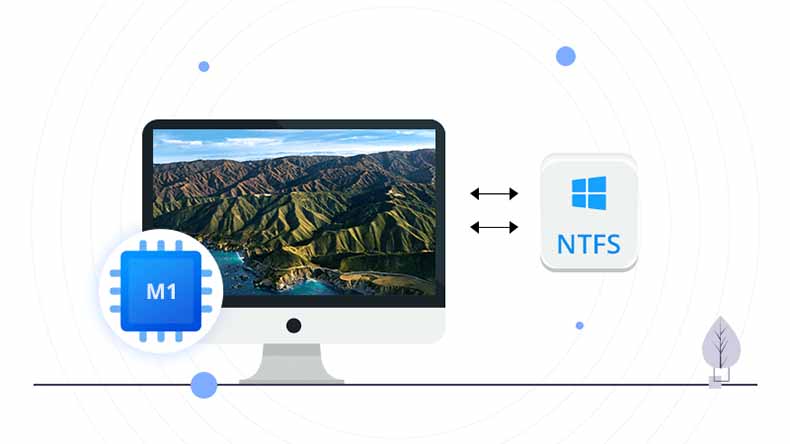How to Enable NTFS Writing on Mac?
NTFS stands for New Technology File System. It was created and supported by Microsoft Windows. It is the standard format that Windows uses to operate its drives since the introduction of Windows NT 3.1. Unfortunately, when it comes to Apple macOS, the NTFS format is not supported to write, including edit, delete, or rename. It only possesses the read-only function which opens up the file only to be read. This post will go through the advantages of the NTFS format and give you solutions to enable NTFS writing on Mac.
What makes the NTFS format stand out
To avoid these incompatibility issues between Windows and macOS, some users will use FAT32 or exFAT which works perfectly for all devices but there’s a catch, you can save up to 4GB of one single file only on these formats. The reason why many people prefer NTFS support even on Mac devices is that it has many advantages.
It can be compressed in size easily without messing up the files or any data.
It provides an encryption setting that allows your data full protection from unauthorized access.
It has multiple passwords setting and separate permissions setting that allows its user to secure the files completely.
It keeps a clean track record of all files whether they are edited, deleted, or newly created. It’ll keep everything set in a record which also helps in restoring old or deleted files in the drive.
Some of you out there might need a drive that can keep up with all of the above-mentioned requirements and that’s why you would need the NTFS system to work out for you.
But what to do when NTFS doesn’t work on macOS? Is there no NTFS writing support on Mac? Well, there are a few ways that you can try.
Use third-party software
Third-party software is so far the easiest way to fulfill NTFS writing on macOS. There are mainly two types, the commercial one and the completely free one.
Commercial software like iBoysoft NTFS for Mac is an amazing NTFS support provider for Mac. It is fast, safe, and easy to install and use. It is completely compatible with the latest macOS 11 and Apple Silicon M1 chip so you don’t have to face any inefficiency in the system and all your files can be perfectly transferred from Windows to Mac without any data loss or file corruption. Moreover, it provides a 7-day trial.
Steps on how to use iBoysoft NTFS for Mac:
- Download the app and install iBoysoft NTFS for Mac on your Mac.
- Connect the NTFS drive to your Mac. It will automatically mount in read-write mode.
- Now you can use the software freely to read-write the NTFS drives.
Really easy and quick, right?
Another option is the open-source software that’s free of cost but would require you to set up the terminal yourself. For example, Mounty for NTFS is a free NTFS driver that is used most commonly among users to enable NTFS writing on macOS. However, these free NTFS for Mac products is usually complicated to download, hard to operate, and more importantly, incompatible with macOS 11 or Apple M1 Mac. Honestly speaking, they are not worth your time and effort when compared with paid NTFS for Mac software.
Enable NTFS read-write feature disabled in macOS
macOS provides an NTFS writing feature which is disabled by default because it is still in the testing phase. You can enable this feature to access NTFS write support on Mac but it can damage or erase the data on your files anytime. It’s a risky move but if you still want to give it a try then follow the below-mentioned steps.
Steps on how to enable NTFS writing on Mac through terminal:
- Go to Finder > Applications > Utilities > Terminal
- Connect your NTFS drive with Mac
- Type “sudo nano /etc/fstab” in the Terminal to edit the fstab file
- Type “LABEL=VOLUME_NAME none ntfs rw,auto,nobrowse” and press “Control + O” to write
- Replace “Name” with the real name of your NTFS drive
- Hit Enter and press “Control + X” to exit
- Connect your disk again to the Mac device
- Open Finder, then click Go > Go to Folder, then type ‘/Volumes and hit Enter
- Find your NTFS disk to read-write to it
Conclusion
You can use other alternatives as well to enable write access on NTFS drive on your Mac, but the best option is to use credible software like iBoysoft NTFS for Mac as it’s safe and efficient in working. Any other option will require you to take certain risks that can eventually harm your data or the Mac operating system.

